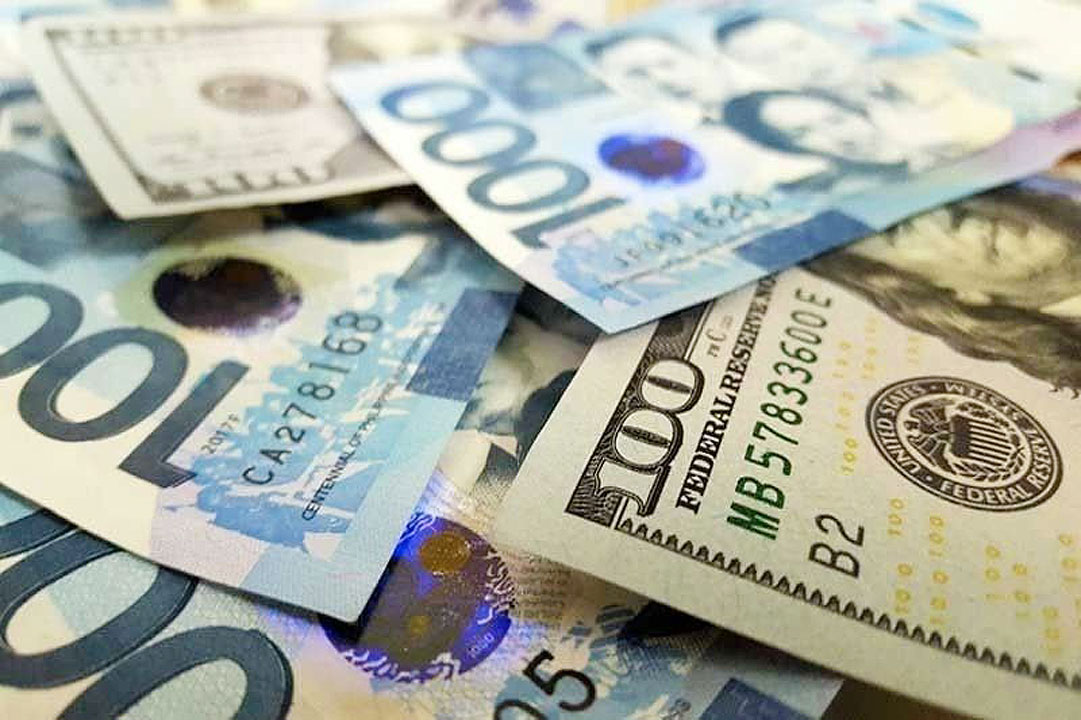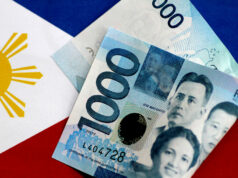Peso returns to P56 level amid fragile Mideast ceasefire

THE PESO climbed back to the P56-per-dollar level on Wednesday as inflation fears eased amid the decline in global oil prices following the ceasefire between Iran and Israel.
The local unit closed at P56.711 versus the greenback, jumping by 44.9 centavos from its P57.16 finish on Tuesday, Bankers Association of the Philippines data showed.
This was its best close in over a week or since it finished at P56.70 on June 17.
The peso opened Wednesday’s trading session sharply stronger at P56.80 against the dollar. It traded at the P56 range throughout the day, climbed to a high of P56.65, while its weakest showing was at just P56.81 against the greenback.
Dollars exchanged went down to $1.55 billion on Wednesday from $2.01 billion on Tuesday.
The peso extended its rally as the ceasefire with Israel and Iran remains in effect and amid the pullback in oil prices, a trader said in a phone interview.
The decline in oil prices seen following the ceasefire announcement “erased all of the increases… since the Israel-Iran attacks started on June 13,” Rizal Commercial Banking Corp. Chief Economist Michael L. Ricafort noted in a Viber message.
“Lower global crude oil prices and a lower US dollar-peso exchange rate would help ease the recent pressure on imported prices and overall inflation,” he said.
The conflict in the Middle East had caused the peso to slide to the P57 level last week after starting June at the P55 level on concerns that high oil prices would stoke inflation anew. The Philippines is a net importer of oil.
Risk appetite also got a boost after some US Federal Reserve officials said they were open to resuming their easing cycle as early as next month, Mr. Ricafort added.
For Thursday, the trader expects the peso to move between P56.60 and P57.10 per dollar, while Mr. Ricafort sees it ranging from P56.55 to P56.85.
The dollar struggled to regain lost ground on Wednesday as investors decided to take on more risk following a fragile truce between Israel and Iran, Reuters reported.
Markets were jubilant and an index of global shares hit a record high overnight as a shaky ceasefire brokered by US President Donald J. Trump took hold between Iran and Israel.
The two countries signaled the air war between them had ended, at least for now, after Mr. Trump publicly scolded them for violating a ceasefire he announced.
Investors heavily sold the dollar following the news, having piled into the US currency after pouring into the safe-haven currency during the 12 days of war between Israel and Iran that also saw the US attack Iran’s uranium-enrichment facilities.
The euro edged down 0.1% on the day, but at $1.1597, was still near its highest since October 2021, while sterling was unchanged at $1.3616, near its highest since January 2022.
In other currencies, the Swiss franc, which scaled a 10-1/2-year high on Tuesday, steadied at 0.8051 per dollar.
The yen lagged the rest of the major currencies, weakening on the day to leave the dollar up 0.37% at 145.4.
Against a basket of currencies, the dollar was up marginally at 98.1.
On Tuesday, Federal Reserve Chair Jerome H. Powell stuck to his cautious approach and reiterated that the central bank was in no rush to ease rates at his semi-annual testimony to Congress, but this did little to shift market expectations of an 18% chance that the Fed could cut in July, according to the CME FedWatch tool.
A number of Fed officials have spoken in the last week, and their views show there is divergence among policymakers. Both Michelle Bowman and Christopher Waller seemed to lean in favor of a summer rate cut, while others, such as Fed Governor Michael Barr, have signaled they believe the economy is holding up well enough not to require any for now.
A raft of weaker-than-expected US economic data in recent weeks have also supported expectations for Fed cuts this year, with futures pointing to nearly 60 basis points worth of easing by December.
Data on Tuesday showed US consumer confidence unexpectedly deteriorated in June as households grew increasingly worried about job availability, another indication that labor market conditions were softening. — AMCS with Reuters



